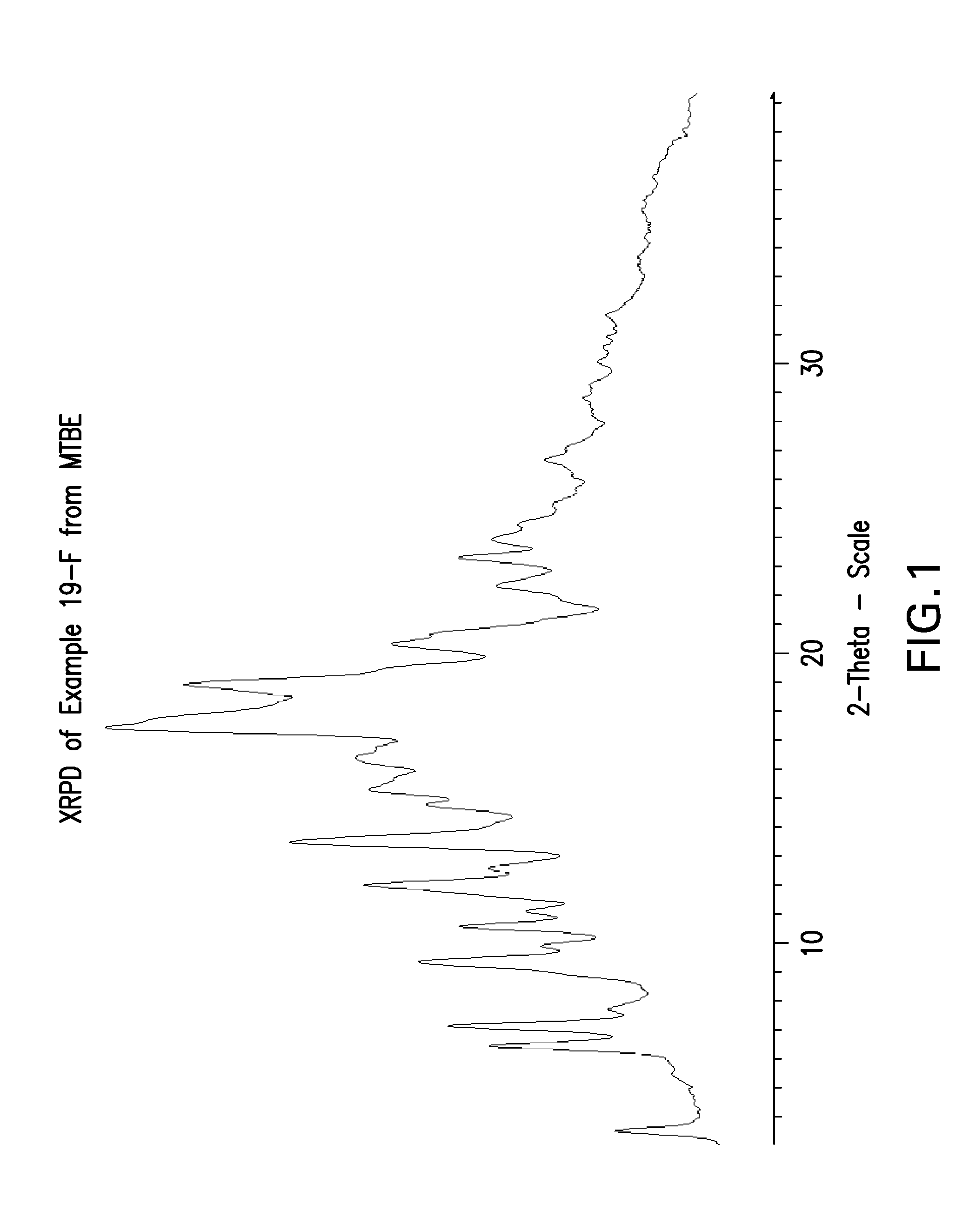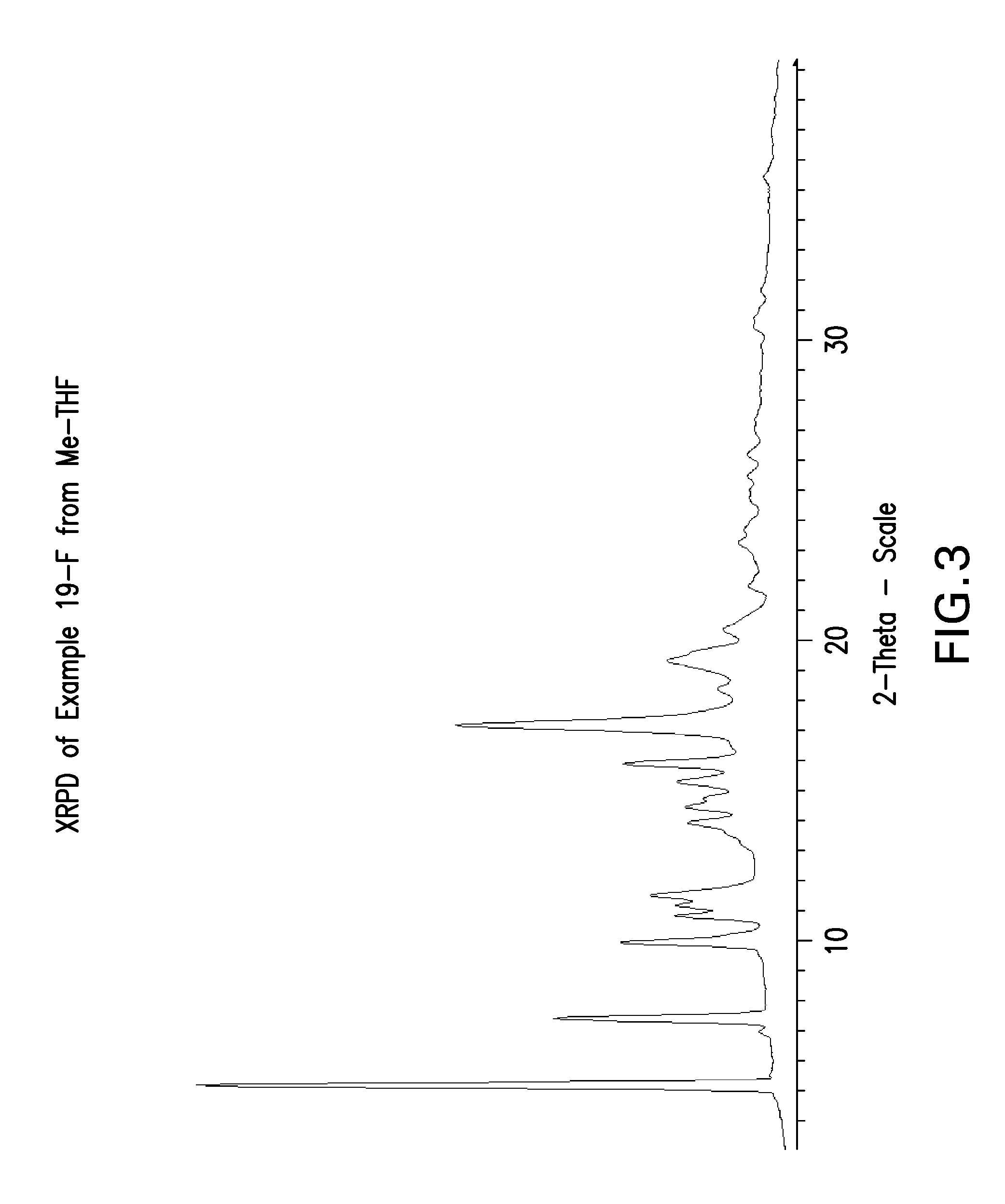Tetrahydropyrido-pyridine and tetrahydropyrido-pyrimidine compounds and use thereof as c5a receptor modulators
- Summary
- Abstract
- Description
- Claims
- Application Information
AI Technical Summary
Benefits of technology
Problems solved by technology
Method used
Image
Examples
example 1
3,5-Dimethyl-4-(4,4,5,5-tetramethyl-1,3,2-dioxaborolan-2-yl)pyridine
[0785]
[0786]To a solution of 4-bromo-3,5-dimethylpyridine (600 mg, 2.70 mmol) in dioxane (9 mL) was added bis(pinocolato) diboron (1.37 g, 5.39 mmol), potassium acetate (1.06 g, 10.8 mmol), S-phos (221 mg, 0.539 mmol) and PdCl2(MeCN)2 (35 mg, 0.14 mmol). Reaction was heated at 95° C. for 16 h. Water was added and the aqueous phase was extracted with EtOAc (3×). The combined organic layers were washed with brine, dried over anhydrous sodium sulfate, filtered, and concentrated under reduced pressure. The residue was purified via FCC (40-60% EtOAc / heptane) to give the title compound. MS (ESI+) m / z 234.1 (M+H)+.
example 2
2,4-Dimethyl-3-(4,4,5,5-tetramethyl-1,3,2-dioxaborolan-2-yl)pyridine
[0787]
[0788]To a solution of 3-bromo-2,4-dimethylpyridine (476 mg, 2.56 mmol) in DMSO (14 mL) was added bis(pinocolato) diboron (3.25 g, 12.8 mmol), potassium acetate (1.26 g, 12.8 mmol) and PdCl2(dppf).CH2Cl2 adduct (209 mg, 0.256 mmol). Reaction was heated at 95° C. for 16 h. Water was added and the aqueous phase was extracted with EtOAc (3×). The combined organic layers were washed with brine, dried over anhydrous sodium sulfate, filtered, and concentrated under reduce pressure. The residue was purified via FCC (40-70% EtOAc / heptane) to give the title compound. 1H NMR (400 MHz, CDCl3) δ ppm 8.35 (d, J=5.1 Hz, 1H), 6.91 (d, J=5.1 Hz, 1H), 2.64 (s, 3H), 2.42 (s, 3H); 1.43 (s, 12H); MS (ESI+) m / z 234.1 (M+H)+.
example 3
3,5-Dimethyl-4-(4,4,5,5-tetramethyl-1,3,2-dioxaborolan-2-yl)-1-tosyl-1H-indazole
[0789]
[0790]A solution of 1-(2-chloro-6-fluoro-3-methylphenyl)ethanone (10 g, 53.6 mmol) and hydrazine (5.05 mL, 161 mmol) in DMSO (50 mL) was heated at 80° C. overnight. The reaction mixture was then partitioned between EtOAc and water. The aqueous layer was extracted with EtOAc. The combined organic layers were washed with brine, dried (Na2SO4) and concentrated to provide crude 4-chloro-3,5-dimethyl-1H-indazole as a white solid, which was used in the next step directly. MS (ESI+) m / z 180.9 (M+H)+. NaH (60% dispersion in mineral oil, 3.87 g, 97 mmol) was added portion wise to a solution of crude 4-chloro-3,5-dimethyl-1H-indazole (9.7 g, 53.7 mmol) in THF (200 mL) at −20° C. The mixture was allowed to warm to 0° C. and stir for 20 min, then TsCl (14.33 g, 75 mmol) was added. The reaction mixture was allowed to warm to rt and stir overnight. The reaction mixture was cooled to −20° C. and sat. NH4Cl aqueou...
PUM
 Login to View More
Login to View More Abstract
Description
Claims
Application Information
 Login to View More
Login to View More - R&D
- Intellectual Property
- Life Sciences
- Materials
- Tech Scout
- Unparalleled Data Quality
- Higher Quality Content
- 60% Fewer Hallucinations
Browse by: Latest US Patents, China's latest patents, Technical Efficacy Thesaurus, Application Domain, Technology Topic, Popular Technical Reports.
© 2025 PatSnap. All rights reserved.Legal|Privacy policy|Modern Slavery Act Transparency Statement|Sitemap|About US| Contact US: help@patsnap.com



